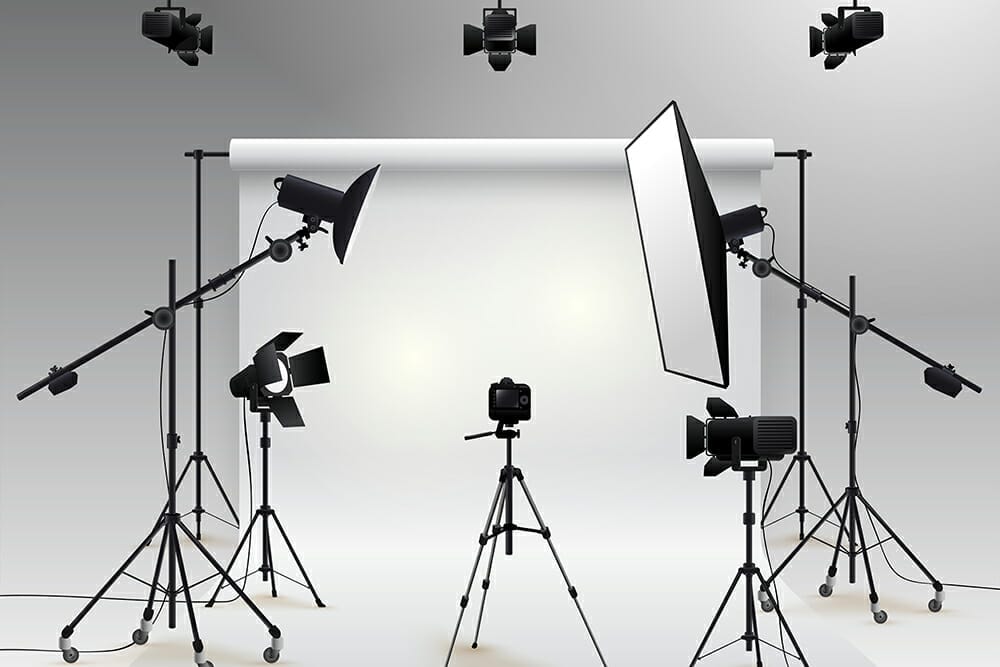What is Butterfly Lighting in Photography? Its Here and Terrific
Understanding butterfly lighting in photography is essential for professional photographers seeking to enhance their portrait photography skills. This lighting technique is characterized by a specific arrangement of lights that creates a remarkable shadow pattern. Recognizing its attributes and how to effectively implement it can be the key to creating breathtaking images.
So, what exactly is butterfly lighting? To put it simply, it's a lighting setup that casts a small, butterfly-shaped shadow under the subject's nose. This style of lighting is particularly popular in beauty and fashion photography, as it helps to give the subject's face more dimension, making the cheekbones appear higher and the eyes more captivating.

How Does Butterfly Lighting Work?
Understanding how to harness butterfly lighting in photography begins with its basic setup. The key components involve placing the light source at a 45-degree angle to the subject's face, and slightly above eye level. This positioning mimics natural light coming from above, which gives the subject a flattering glow.
The light source can be a softbox, a beauty dish, or even sunlight filtering through a window. The most common practice is using a single light:
- Place the light source above the subject's eye line and aimed downwards.
- Ensure the light-source is positioned at a 45-degree angle, to both the side and above the subject.
This setup creates a highlight on the forehead, while the chin and under-nose become shadowed, generating that signature butterfly-shaped shadow. Additional reflectors can be used to bounce light back onto the shadows for a more balanced look.

The Importance of Butterfly Lighting
One key reason to incorporate butterfly lighting into your repertoire is its ability to flatter portraits. When done right, this technique can accentuate facial features particularly well. The upwards lighting casts shadows that define cheekbones and jawlines, making for striking portraits.
Another fantastic aspect of butterfly lighting is its versatility. While often associated with beauty shots, it can also be used effectively for other types of photography, including:
- Fashion photography
- High-contrast portrait work
- Headshots
The versatility of butterfly lighting speaks volumes about its applications; it can be adapted according to style and subject preferences.

Perfecting the Technique
Practice makes perfect, and butterfly lighting is no exception. Here are some remarkable tips to consider while experimenting with this lighting style on your next photoshoot.
- Experiment with different light modifiers, such as softboxes, beauty dishes, or even bare bulb setups. Each will produce varying shadows and highlights.
- Take your time adjusting the light's angle and distance until you achieve the desired effect on the subject's face.
- Incorporate reflectors to soften the shadows without losing the dramatic quality of the butterfly lighting.
By incorporating diverse elements and adjusting them according to your subjects needs, you will be able to master butterfly lighting and elevate your photography to new heights.

Using Butterfly Lighting with Other Techniques
While butterfly lighting alone can create stunning images, blending it with other lighting techniques can yield even more impressive results. For instance, combining butterfly lighting with Rembrandt lighting can produce dramatic portraits where both light effects complement one another beautifully.
Additionally, consider using butterfly lighting in conjunction with Rembrandt lighting to create multi-dimensional images that pull viewers in.
Common Mistakes to Avoid
Even seasoned photographers can sometimes find themselves falling into the trap of common mistakes when using butterfly lighting. Here are some to avoid:
- Positioning the light source too far away, which can result in hard shadows rather than soft, flattering ones.
- Using overly harsh light sources without diffusion, causing an unappealing glare.
- Failing to adjust the reflector position, which can lead to unbalanced lighting across the face.
Being aware of these potential pitfalls and taking steps to avoid them will help ensure your butterfly lighting setup produces the best results possible.
Examples of Butterfly Lighting in Action
The finesse of butterfly lighting can be seen in numerous portraits across various fields, including fashion, beauty, and celebrity photography. Famous photographers have leveraged this technique to create iconic images. Notable examples include:
- Portraits in magazines, where the butterfly lighting softens the models' features, creating an alluring visual.
- Classic portrait photographers like George Hurrell, who used this lighting style to accentuate Hollywood's glamorous starlets.
- Fashion advertisements where the lighting draws attention to the product as well as the models beauty.
Each case exemplifies how profoundly butterfly lighting can impact a photograph's overall aesthetic.
Conclusion
In conclusion, mastering the technique of butterfly lighting in photography unlocks a treasure trove of opportunities for professional photographers seeking to improve their portrait skills. Experimenting, understanding the mechanics, and refining your method will lead to stunning results that resonate with audiences.
This incredible lighting technique can breathe life and dimension into your work. Take the time to explore its potential and you will find yourself creating remarkable, unforgettable portraits.
For more photography tips, check out articles on lighting importance or learn how to set up lighting.
FAQ
- What are the best light modifiers to use? Softboxes and beauty dishes are excellent options for diffusing and controlling light.
- Can butterfly lighting work outdoors? Yes, it can be adapted to outdoor settings using natural sunlight or portable flash units.
- How do I know if I am using butterfly lighting correctly? Look for the characteristic butterfly-shaped shadow beneath the subject's nose; if it's there, you're on the right track!
As an Amazon Associate, I earn from qualifying purchases.

